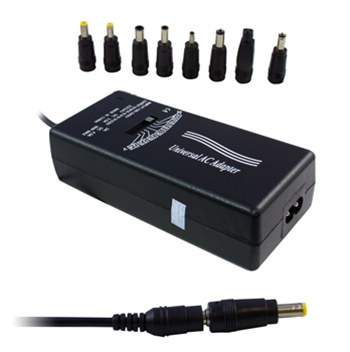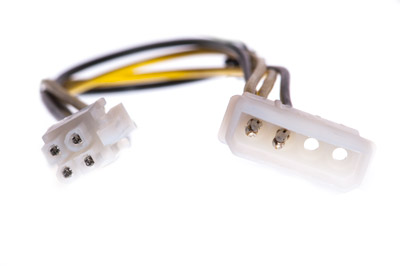| We proberen onze website in zoveel mogelijk talen te lokaliseren, maar deze pagina is nu vertaald per machine met gebruik van Google Vertaal. | sluit |
-
-
producten
-
bronnen
-
ondersteuning
-
bedrijf
-
-
Beginpagina
-
Middelen
- Weblog
- Vaststelling Laptop opladen IssuesFixing Laptop Charging Issues
Vaststelling Laptop opladen IssuesFixing Laptop Charging Issues
Door Steve Horton Oktober 16, 2013charge, charging, laptop, powerNo CommentsNiets is aangenamer voor internet-junkies dan op internet surfen. Maar als hun laptop er niet in slaagt om op te laden, kan hun plezier gemakkelijk veranderen in pijn. Geen paniek, soms zijn stroomproblemen net zo verholpen als het BIOS opnieuw instellen. Helaas kon het oplossen ervan letterlijk “op zoek naar een speld in een hooiberg” lijken!
Voor gebruikers van Windows XP, 7 en 8, kan het oplossen van problemen met een stroomprobleem variëren, maar de protocollen voor elke software zijn in wezen hetzelfde. Desalniettemin is de beste manier om uw probleem te beperken, door het elimineren van de eenvoudigste problemen uit de vergelijking. De AC-adapter en stopcontacten van je laptop moeten als eerste worden gecontroleerd. Analyseer uw stroomkabel op schade zoals blootliggende draden en plooien. Als er geen schade is, koppelt u uw AC-adapter los, plaatst u de voedingskabel terug en zet u hem aan. Als de stroomindicator-LED van uw netadapter niet oplicht, hebt u mogelijk een andere kabel nodig.

Een typische power brick voor een laptop, met een verscheidenheid aan connectoren.Een andere techniek om vermogensproblemen te achterhalen is om een harde reset uit te voeren. Als uw laptop nog steeds niet wordt ingeschakeld, koppelt u externe apparaten los, inclusief de AC-adapter en batterij. Houd vervolgens de aan / uit-knop 10 tot 15 seconden ingedrukt om de stroom- en standaardinstellingen te resetten. Als uw laptop een niet-verwijderbare batterij heeft, voert u een geforceerde reset uit en sluit u vervolgens de AC-adapter opnieuw aan. Schakel vervolgens de laptop in en bekijk de LED-indicatielampjes op het toetsenbord en luister of er componenten zijn die worden ingeschakeld. Het is duidelijk dat als het normaal opstart, je je computer hebt hersteld.
Als het stroomlampje op uw AC-adapter oplicht maar niet blijft branden, is er mogelijk een elektrisch tekort. Tekorten kunnen optreden waar uw AC-adapter verbinding maakt met de laptop of met gebogen / afgebroken pinnen. Als u schade op uw kabelpennen ziet, hebt u mogelijk een andere wisselstroomadapter nodig. Als de schade op de connector van uw laptop zit, heeft u helaas een andere voedingskaart nodig. Als geen van de besproken protocollen aanwezig is, omvatten andere ideeën het opnieuw formatteren, het controleren van foutmeldingen en programma’s van derden.

Een standaard interne stroomaansluiting voor een pc.Een andere techniek voor probleemoplossing is het testen van de levensduur en het slijtagepercentage van een laptop. Hoewel het ingewikkeld klinkt, is het percentage voor leven en slijtage gewoon een kalibratietest die bepaalt of laptops een echt (actueel) of nep (onwaar) batterijprobleem hebben. In termen van de leek is deze test een barometer (meting) van de lading (kracht) die de accu van uw laptop onderhoudt.
De test voor het percentage levensduur en slijtage is afhankelijk van of uw kritieke alarm is geactiveerd. Het kritieke alarm is het piepgeluid dat u waarschuwt wanneer uw batterij bijna leeg is. Het werkt in combinatie met de Windows-batterij, het batterijvermogen op uw bureaublad. Houd bij het opsporen van fouten in het gebruiks- en slijtagepercentage rekening met:
- Als de laptop een ongebruikelijk vermogensniveau-percentage vertoont
- Als de batterij (gierig) zeer lage waarden van het vermogensniveau aanhoudt
- Als het kritieke alarm niet signaleert (pieptoon) wanneer de batterij bijna leeg is
- Als al het bovenstaande gebeurt ondanks een normale functielaptop
Over het algemeen is het probleem, wanneer de laptops naar behoren werken ondanks de lage batterijpercentages, vaak een softwaregerelateerd probleem in de ACPI. De ACPI- of Advance-configuratie en de Power Interface controleren de energie-instellingen van uw laptop door een interface te maken met software zoals Windows-batterijverslager, programma’s van derden en BIOS (Basic Input / Output System), die het batterijpercentage daadwerkelijk valideert.
De ACPI-kalibratietest vereist toegang tot het energiebeheer binnen de systeeminstellingen. Bij energiebeheer geeft u de powersave-functie op om niets te doen wanneer de niveaus kritiek worden om de batterij leeg te maken, zodat uw laptop automatisch wordt uitgeschakeld. Laat de batterij opladen tot 100% voordat u de laptop opnieuw voedt. Als uw laptop niet normaal werkt nadat u hem opnieuw hebt ingeschakeld, probeert u hem opnieuw te kalibreren.
Normaal gesproken, als de ACPI- en batterijgerekten extreem lage vermogensniveaus weergeven, dwingen kritieke alarmen laptops in de slaapstand. Dus als uw ACPI niet goed functioneert, kan uw batterij ongebruikelijke vermogenspercentages weergeven. Als dat het geval is, zal uw BIOS waarschijnlijk het levensduurpercentage van uw batterij niet valideren. Dus als kalibratie geen defecte ACPI bepaalt, kan het probleem een fout in het BIOS van uw laptop zijn.
Hoewel de ACPI effectief is voor het oplossen van stroomproblemen, is het alternatief om uw kritieke alarm uit te schakelen om de batterij goed te testen. Dit wordt bereikt door het Configuratiescherm te openen en op het geluidspictogram te klikken. Klik in het menu Geluid op Programma en je ziet de lijst met kritieke alarmen van de batterij . Klik op Kritiek alarm en ga naar de onderkant van dat venster met de tekst Geluiden . Klik op het menu Geluiden , dat een uitgebreide lijst met opties opent. Klik boven aan dat menu op none – het verschijnt uiteindelijk in het geluidenvenster . Klik vervolgens op de knop Toepassen in de rechterbenedenhoek, waardoor het geluidvenster wordt gesloten.
Het oplossen van problemen met de stroomvoorziening via de ACPI creëert het potentieel om gegevens te verliezen, omdat de batterijverslinder moet worden uitgeschakeld. Dit betekent dat het vermogen van uw batterij waarschijnlijk niet zichtbaar zal zijn. Uiteindelijk, als uw laptop gerepareerd kan worden, is de kans groot dat een van de oplossingen die we hebben besproken uw dilemma zal oplossen.
Was this post helpful?YesNoVrij Updates van stuurprogramma's
Update uw stuurprogramma's in minder dan 2 minuten om beter te genieten PC-prestaties - Vrij.
Vrij Updates van stuurprogramma's
Update uw stuurprogramma's in minder dan 2 minuten om beter te genieten
PC-prestaties - Vrij.
Niet het juiste antwoord gevonden?Stel een vraag aan onze community van experts uit de hele wereld en een antwoord in een mum van tijd ontvangen.meest relevant recente artikelen Bedrijf| Partners| EULA| Juridische mededeling| Verkoop/Deel mijn gegevens niet| Beheer mijn cookiesCopyright © 2025 Corel Corporation. Alle rechten voorbehouden. Gebruiksvoorwaarden | Privacy | CookiesPin het op Pinterest
-